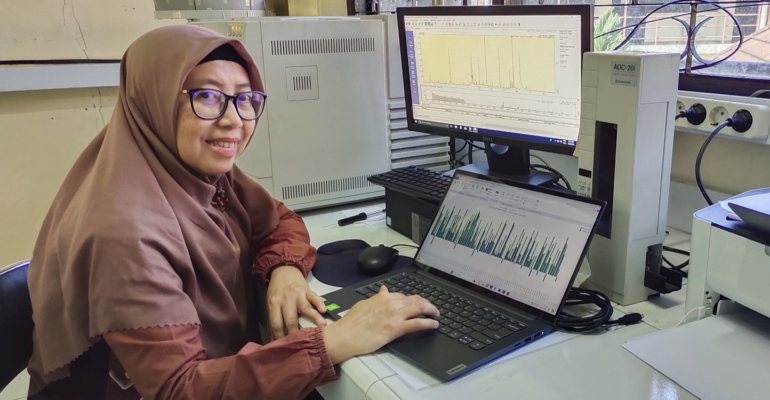Prof Nancy Dewi Yuliana Reveals the Advantages of Metabolomics Approach for Food Halal Detection

Indonesia as the second largest Muslim country in the world is very concerned about the issue of halal food. Ensuring halal food is not only seen from the packaging, but must also be supported by laboratory analysis results that show that the product does not contain non-halal ingredients.
According to Professor of the Faculty of Agricultural Technology (Fateta) IPB University, Prof Nancy Dewi Yuliana, halal food analysis methods that have been developed so far have limitations, including complicated sample preparation and difficult to apply to complex food products.
Therefore, said Prof Nancy, research to develop alternative analysis methods that are simpler but able to detect the presence of non-halal components in low concentrations in complex food matrices is still needed. One of them is metabolomics.
‘The metabolomics approach allows us to observe simultaneously the presence and dynamics of a large number of components or chemical compounds in a sample that is a complex mixture. The metabolomics approach can provide more detailed and complete information,’ she explained during the IPB University Scientific Oration Pre Press Conference online, (25/4).
However, Prof Nancy revealed that the metabolomics approach has not yet become a standard method for determining food halalness by authorised institutions at this time. However, food is complex and this method can be an alternative.
“So even though it is not yet a standard method, there are new techniques that can overcome these problems, we must do research. Among them is this metabolomics technique,” she said.
Prof Nancy said metabolomics research in the field of halal authentication conducted at IPB University focuses on the analysis of volatile components from fresh ingredients and halal and non-halal processed products using solid phase microextraction (SPME) and gas chromatography (GC-MS).
She explained that the technique can identify volatile components that mark the presence of non-halal meat, such as pork, wild boar and rat, in beef/chicken meatball products. This was successfully done even at the lowest concentration of non-halal meat used in the study, which was 20 per cent.
Interestingly, the marker components in the same non-halal ingredients will be different when processed into different products. For example, the volatile marker for beef processed into burgers is dimethyl disulfide, but when processed into meatballs, the marker component is pentanal.
“The results of this research are important as a basis for developing halal detection tools that are fast and can be used for various processed food products,” she said.
Prof Nancy revealed the reason for metabolomics research to detect halal food at IPB University focusing on volatile components. This is because empirically, the smell of beef is different from that of pork.
“Why does it smell different? Because the volatile composition is also different. We take this as the research principle for halal at IPB University. We focus on the differences in the composition of volatile components from halal and haram food,” she said. (MHT/Rz) (IAAS/RUM)


